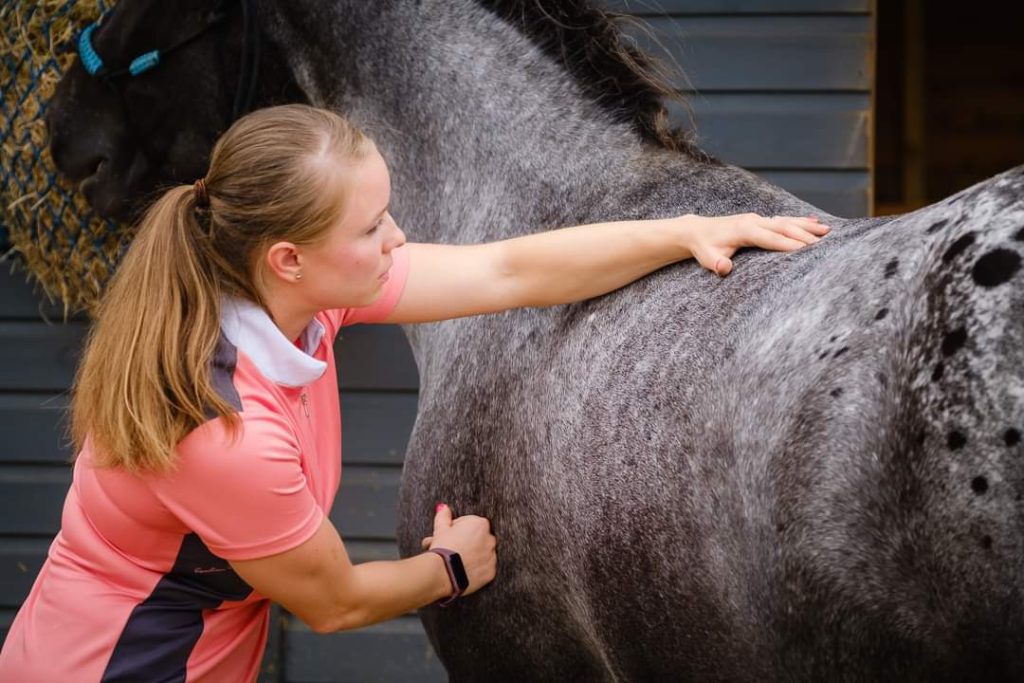Massage plays a very important role in prevention therapy and in recovery from injury. Any dysfunction of the musculoskeletal system needs an overall assessment to be made to assess the causing factors.
The evidence and research that has been done and that is currently underway, highlights just what a huge impact massage is having not only with our equine athletes, but horses used for leisure activities, broodmares and retired horses.
“Therapeutic massage causes systematic effects via several different mechanisms of action, including biomechanical, physiologic, neurologic, and psychologic mechanisms. As we consider muscle bellies, fibres, and myofibrils, it becomes apparent how various areas can be affected with different therapeutic massage applications. For example, although massage may not have a direct influence on a joint, the compensatory tightness that can occur in the muscle from splinting or bracing to protect a vulnerable area can reduce range of motion. After these tight areas are released, the range of motion can return to normal. In general, therapeutic massage involves mechanical pressure, which can increase muscle compliance, and thus results in increased joint motion and decreased stiffness.“
Mike Scott, LMT, CSF, and Lee Ann Swenson, MSc, BSc, Veterinary Science. Vol 29, No 9 (2009)

The mechanical effect of the massage comes from the actual pressure applied to the horse during treatment. The force applied by the masseur will determine the actual stretch of the tissues and the drive of fluids (arterial, venous, and lymphatic). Different variants of pressure can be used to have the desired effect.
Horses that have any muscle tension, contractures, trigger points, stress points, or spasms will greatly benefit from softening and stretching techniques. When applied correctly, this can eventually help break down collagen fibres (scar tissue).
Mechanical pressure also has an effect on the nervous system. Depending on the application it can have a soothing and relaxing or a stimulating effect on a horse.
Benefits of the massage include:
- Increased range of movement and stride length
- Reduced activity of nociceptive pain receptors
- Reduced muscle tension and soreness
- Reduced muscle spasm
- Greater flexibility and range of motion
- Increased sense of wellbeing and reduced stress
- Enhanced blood flow, better tissue oxygenation
- Improved proprioception
- Improved posture, circulation, hair coat, muscle tone
- Immune system support
- Injury prevention
- Reduced fatigue
- Good metabolism and the removal of carbon dioxide,
- Release endorphins,